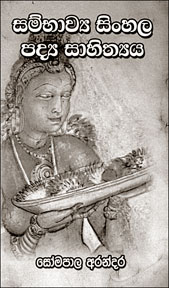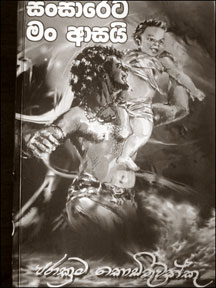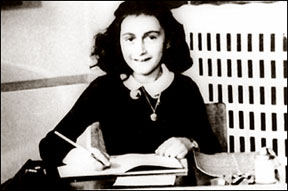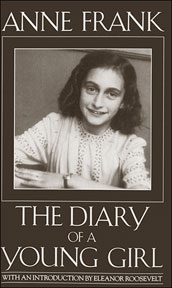
New trend in literary criticism
"Sambhavya Sinhala Padya Sahithyaya"
Author: Somapala Arandara
Ratna Book Publishers, Colombo 10.
Reviewed by R. S. Karunaratne
Somapala Arandara's "Sambhavya Sinhala Padya Sahithyaya" traces the
history and development of classical Sinhala literary tradition from the
Anuradhapura period to the Kotte period. It is a rare kind of work that
combines research, literary appreciation and comparison of Sinhala
classical poetry with Pali, Sanskrit and English poetry.
 Comparison of Sinhala poetic works with Pali and Sanskrit literature
is nothing new. However, Arandara appears to be the first author to
compare Sinhala classical poetry with works of great English poets. Comparison of Sinhala poetic works with Pali and Sanskrit literature
is nothing new. However, Arandara appears to be the first author to
compare Sinhala classical poetry with works of great English poets.
Martin Wickramasinghe, of course, compared Buddhist Jathaka stories
with the Russian novel. He confined himself to Russian prose leaving out
poetry.
In 13 chapters the author covers Sigiri Graffiti, Sasadawatha,
Muvadevdavata, Kawu Silumina, Mayura Sandesha, Thisara, Parevi, Kokila,
Selalihini, Gira and Hansa Sandeshas, Guttila Kavyaya and Kavyashekhara.
The book serves as a guide to general readers interested in Sinhala,
classical poetry. It is an aid to students engaged in literary studies
at secondary and tertiary levels. What is more, the book serves as a
reference guide to teachers of literature.
In the opening chapter the author gives an array of findings on 'Sigiri'
Graffiti and Frescoes by well-known authorities. He quotes from Dr.
Benille Priyanka's latest publication, "Meaning of the Sigiriya
paintings based on recent archaeological evidence" (2005).
Major Forbes found Sigiriya in 1831, and 1833. Rhys Davids was the
first scholar to discover the frescoes at Sigiriya. Meanwhile,
archaeologist H. C. P. Bell discovered the Sigiriya graffiti. Prof.
Senerat Paranavithana deciphered a part of it in 1928 and wrote two
volumes of all the graffiti in 1956.
H. C. P. Bell was of the view that the frescoes depicted King
Kasyapa's queens and female attendants. Dr. Ananda Kumaraswamy said the
frescoes of damsels are in a heavenly abode. Dr. P. E. P. Deraniyagala
was of the view that the frescoes were of royal ladies or dancing
damsels. Prof. Senerat Paranavithana said the frescoes were "symbolic
lightning and cloud damsels." Dr. Benille Priyanka made a cautious
remark: "It is quite possible that the models for famous Sigiriya
damsels were court ladies of king Kasyapa..."
The author's explanations and interpretations of the three major Gee
Kavyas - Sasadawatha, Muradevdavatha and Kawu Silumina - are
enlightening and entertaining. "Kawu Silumina" stands out in his
treatment and you are tempted to read it for pleasure. The saga of king
Kusa and Queen Prabhavathi is a comic story which is sometimes lewd,
pious and ludicrous.
Arandara's penchant for comparing Sinhala classical poetry with
English literature is praiseworthy. He compares Prabhavathi in "Kawu
Silumina" with Katherina in Shakespeare's "Taming of the shrew," and
with Elizabeth Bennett in Jane Austin's "Pride and Prejudice".
The author also sees a resemblance between Prabhavathi and the
heroine in the film "The Trap." In reviewing "Mayura Sandesha" the
author reveals its prominence as the fore runner and guide to other
succeeding poets of Sandeshas. He says that even the eminent poet Ven.
Thotagamuwe Sri Rahula Thera imitated the Mayura Sandesha when he wrote
certain verses.
The author skilfully compares the scene at Welitota Inn in "Gira
Sandesha", where travellers had gathered to spend the night and their
remarks in praising their kings with the church scene at Thomas A
Beckett in Geoffrey Chancer's world famous "Canterbury Tales".
Arandara's deep sense of appreciation and understanding of the water
sport scenes found in Sandeshas vividly points out the unique attraction
of a Sinhala damsel bathing in her traditional bathing kit.
The carnival scene in "Guttila Kavyaya" is a novel technique in the
traditional sandesha form. The verse no. 122 is picturesquely audible as
it is composed in various dance rhythms that deserve a merry-making
spree.
Reviewing "Kavya Shekharaya", treated as the crowning gem of sinhala
poetry, Aromdara says that the author had been prone to secular matters,
at times too vulgar for a decent monk.
Quoting two verses composed by Munidasa Cumaratunga and Ananda
Rajakaruna, Arandara appreciates the innocence and playfulness of
children. Moreover, the code of ethics given by a father to his daughter
on her wedding day is full of meaning and guidance.
Somapala Arandara's "Sambhavya Sinhala Padya Sahithyaya" is a
compulsory read for all literary - minded people because it sets a new
trend in literary criticism.n
A new perspective of the world
A new book entitled "The World I Saw" is to be published this month,
Subtitled 'a lifetime of travel' it is the work of Rienzie Weereratne
who was a director of Lever Bros Ceylon in the 1950s and '60s. Much of
his travels were with the multinational Unilever for which he worked for
most of his life. This culminated with special assignments with United
Nations organisations.
His first book was "A Humane Judge", a biography of Sir Thomas de
Sampayo, the first Sri Lankan to act as Chief Justice in the early
twenties published in 2004. "The World I Saw" covers visits to over
sixty countries in five continents over a lifetime.
He describes the countries he visited especially their highlights but
not as a travelogue alone but with comments on the differing cultures of
the local inhabitants and the factors that have affected and shaped
them.
He writes for example about the Masai in the Rift Valley in Kenya,
the civilisations that had existed in the West Coast countries of Africa
such as Ghana and Nigeria and the impact of slavery and colonisation,
the Hittites in Central Anatolia and their relationship to the Egyptians
and Rameses, the diversity of the peoples of India and the impact of the
British Raj on them, colonisation by the Portuguese, Spanish, Dutch and
French and the diaspora they created of the Indians and Chinese in more
recent times. These are but examples of the vast extent of the world the
author covers.
The book is published by Typeforce in Melbourne and printed and
produced by Sarvodaya Vishva Lekha Ratmalana.
It is extensively illustrated, is bound in hard covers and has a
richly colourful dust jacket. "The World I Saw" is available at 29 de
Fonseka Place, Havelock Town, Colombo 5 and at the Barefoot Bookshop at
Galle Road, Kollupitiya.n
Choose life
Title: Sansaareta Man Aasai
Author:Parakrama Kodithuwakku
Reviewed by Chamali Kariyawasam
 For want of a better translation let us call this anthology "I Like
Life" because very simply put, it is a meditative celebration of life.
Parakrama Kodituwakku is a poet sprung from the Siri Gunasinghe genre of
observance and poetic empathy. A contemporary of Monica Ruwanpatirana
and Buddhadasa Galappatti, Koidituwakku has been in the poetic field for
nearly four decades. For want of a better translation let us call this anthology "I Like
Life" because very simply put, it is a meditative celebration of life.
Parakrama Kodituwakku is a poet sprung from the Siri Gunasinghe genre of
observance and poetic empathy. A contemporary of Monica Ruwanpatirana
and Buddhadasa Galappatti, Koidituwakku has been in the poetic field for
nearly four decades.
"I Like Life" deals with numerous issues including patriotism, love,
infidelity, progression, westernization to domestic abuse. The foreword
from the author reads something akin to this: "We must search this day,
for a thinking poet, enveloped in compassion and deluged in desire, who
sits with lips pursed upon a horizon which battles the sands." This poet
thinks. The subject matter is emotive to say the least.
One of my favourites titled "Karami Thuthi" is a Thank You poem
written to a friend who put the poet up during a teaching transfer, to
the sugar cane territory far away from urban civilization.
The poem is of a lyrical nature and literally sings its way along
with its strong imagery into the mind of the reader. There is a
victorious sort of melancholy attached to the lyric, which details the
friendship created whilst in hard labour of the process of gathering,
cleaning, shredding sugar cane and finally making sweet jaggery from it.
The universality of the lyrical quality is such that the poem
immediately brought to mind a famous Cuban song "Chan Chan", composed by
Compay Segundo in the 1980's, again set in the precincts of sugar cane
hardships where the travails of the work evokes love between the male
and female protagonist Juanica and Chan Chan.
Several of Kodituwakku's poems are of autobiographic nature stemming
from his experience of being posted willy nilly to remote areas of Sri
Lanka, as a result of his conflicting political views against that of
the ruling government.
The poet had at the time been posted to Balangoda, Veddagala, Udaha
Galagama within a three month period. The reality of this situation is
undoubtedly a timeless one whatever the ruling party may be. A
particularly heartrending poem is 'Amidst the Smoke' (Dumaaraya Meda)
detailing the train journey of separation from his infant son, during
the above trying times.
The collection comprises several poems written by Kodituwakku during
the 70's. These compositions have a progressive feel to them and do not
come across as antiquated.
His more recent poems including Mike Tyson-Michael Jackson-Shane
Warne are connotative and deliberately thought provoking.
The poem "Words to Dad" (Thaathaata Vachanayak) is a poem of great
emotional force and speaks volumes for the disturbed parent-child
relationship and ultimate rejection of the abusive parent. It is in a
way a picture poem due to the way it is depicted in print. The creative
use of the title reinforces the emotions of the poem.
There is a refreshing open mindedness in some of his more political
poems as with "Unwittingly" (Nodanith Daruwan Ekeyen Vetunaa). I am not
entirely sure if it can be categorised as multicultural poetry, but it
is enriched by the thoughtful observation about the frayed relationships
between Sinhala and Tamil ethnic groups.
Kodituwakku is empathic to the salt of the earth and the villager.
Certain poems of the anthology are perhaps the neatest telescopes to
village life one can find. The poet is intent in revealing poignant
memories of the simplicity, beauty and hardships of village life.
The prose in "In search of Siri Gunansinghe" (Siri Gunansinghe Soyaa)
reflects the cravings of the villager for the cool springs, the nearness
of the poet in heart to the country and reiterates the poet's concern
about the paucity of thinking poets".
The "Dog's death" is an interesting piece which lends a blurry
glimpse into the poet's own political convictions. The anecdote is the
1918 execution of the Tzar Nicholas II and family along with the family
dog, initiated by the Bolsheviks.
It prompts the evaluation of atrocities that can be committed in the
name of political ideologies which with the advent of time may
degenerated to the level of mere fads by modern masses.
His last words on Ekaterinburg (where the underground warehouse the
murders were committed is located) are thus: "The masses of the defeated
rebellion, now visit this place where humanity was eradicated as if on
pilgrimage". I vow that I have lost much of the poetic force in the
translation.
I can do no justice to the anthology in a review. It was a thrilling
page turner which had me happy, sad, nostalgic and reflective all at
once. Once in a way a book appears; there is minimum hype but all manner
of content; this is such and is a must read. Ironic that in "searching
for Siri Gunasinghe", Kodituwakku himself appears unambiguously as the
unadulterated "Thinker" of the 21st Century Sinhala poetic sphere.
Anne Frank's first and last love?
by Aditha Dissanayake
[email protected]
|

“Peter loves me not as a lover” she confides |
Literary circles were abuzz last week when a British newspaper
published what it calls the first known photograph of Peter Schiff who
captivated Anne Frank's heart and made her write about him in her famous
diary.
"Peter loves me not as a lover" she confides to her Diary. "But as a
friend and grows more affectionate every day. But what is the mysterious
something that holds us both back? I don't understand it myself...
especially his dislike of religion and all his talk about food and
various other things don't appeal to me...
She had met him at school in 1940, when both families had fled from
Germany to Amsterdam. Her last mention of Peter is in 1944, the year her
family's safe house was raided by the German security police. In her
diary which she began as a private expression of her thoughts she wrote
several times that she would never allow anyone to read it, but which
was later published by her father at the request of friends and
relatives, she talks about her feelings about Peter.
|

“No one has ever become poor by giving”
wrote Anne |
"You know that I'm always honest with you, so I must tell you that I
actually live from one meeting to the next. I keep hoping to discover
that he too is waiting for me all the time and I am thrilled if I notice
a small shy advance from his side...I was very excited yesterday while I
was washing my hair. I knew that he was sitting in the room next to
ours...I am happy if I see him and if the sun shines when I am with
him".
 It is so sad that she never finds the answers to her questions "Am I
only fourteen? Am I really still a silly little school girl? Am I really
so inexperienced about everything? I am afraid that in my longing I am
giving myself too quickly. How later on can it ever go right with other
boys?" Before she can discover more she dies of typhus in the
Bergen-Belsen concentration camp. Peter too is reported to have died in
a Nazi prison camp. It is so sad that she never finds the answers to her questions "Am I
only fourteen? Am I really still a silly little school girl? Am I really
so inexperienced about everything? I am afraid that in my longing I am
giving myself too quickly. How later on can it ever go right with other
boys?" Before she can discover more she dies of typhus in the
Bergen-Belsen concentration camp. Peter too is reported to have died in
a Nazi prison camp.
Britain's The Observer last Sunday reported that Ernst Michaelis, 81,
of London, had found a photo of Peter in a family collection. He had
identified Peter as a fellow student he had known in Berlin. Michaelis,
says he has had the photo authenticated and that it will be displayed on
the Anne Frank House Web site.
There is so much to learn from Anne Frank. Even though she did not
live to carry out her ideals she left behind many a thought worth
thinking about. "No one has ever become poor by giving".
Wrote Anne. "How true Daddy's words were when he said: all children
must look after their own upbringing. Parents can only give good advice
or put them on the right paths, but the final forming of a person's
character lies in their own hands." "Everyone has inside of him a piece
of good news.
The good news is that you don't know how great you can be! How much
you can love! What you can accomplish! And what your potential is!" And
of course those most moving eleven words about war and the human spirit.
"Despite everything, I believe that people are really good at heart". |
